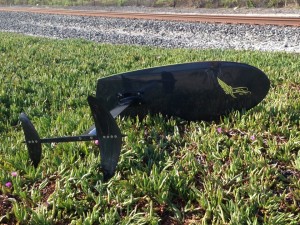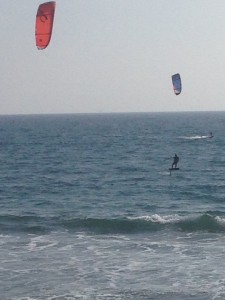Human ingenuity will never cease to amaze me. And neither will the way that science makes its way into nearly every facet of our daily lives.
Especially when it comes to extreme sports. In fact, from wingsuit base jumping to ice climbing, these unbelievable sports wouldn’t exist without making use of scientific principles.
Take what I’ve been seeing more and more off the coast of California in the last year.
Kite surfing is nothing new. You combine a huge inflatable, curved kite and a short surfboard and you go sailing across the top of the water.
At some point, someone must have said to themselves: “This is really great, but I want to go faster. And I want to take advantage of really windy days, but not put up with the choppy surf that high winds create.
Someone, somewhere, must have seen—or ridden—on a hydrofoil boat and noticed that it provides a smooth ride even on choppy seas, it cruises much faster, and turns quicker.
Some smart person attached a hydrofoil to a surfboard and a new sport was born. It makes you do a double take, watching a person sailing three or four feet above the water.
Amazing.
So what’s next?
Once we humans make traveling into space an everyday thing, it wouldn’t be out of the question to see someone whizzing by at a million miles an hour on solar wind sail.
And after that? It’s anyone’s guess. Black hole base jumping? Pulsar catapults?
(If you’re really interesting in the principle of using foils to lift a boat, here’s what MIT says about it: hydrofoils

